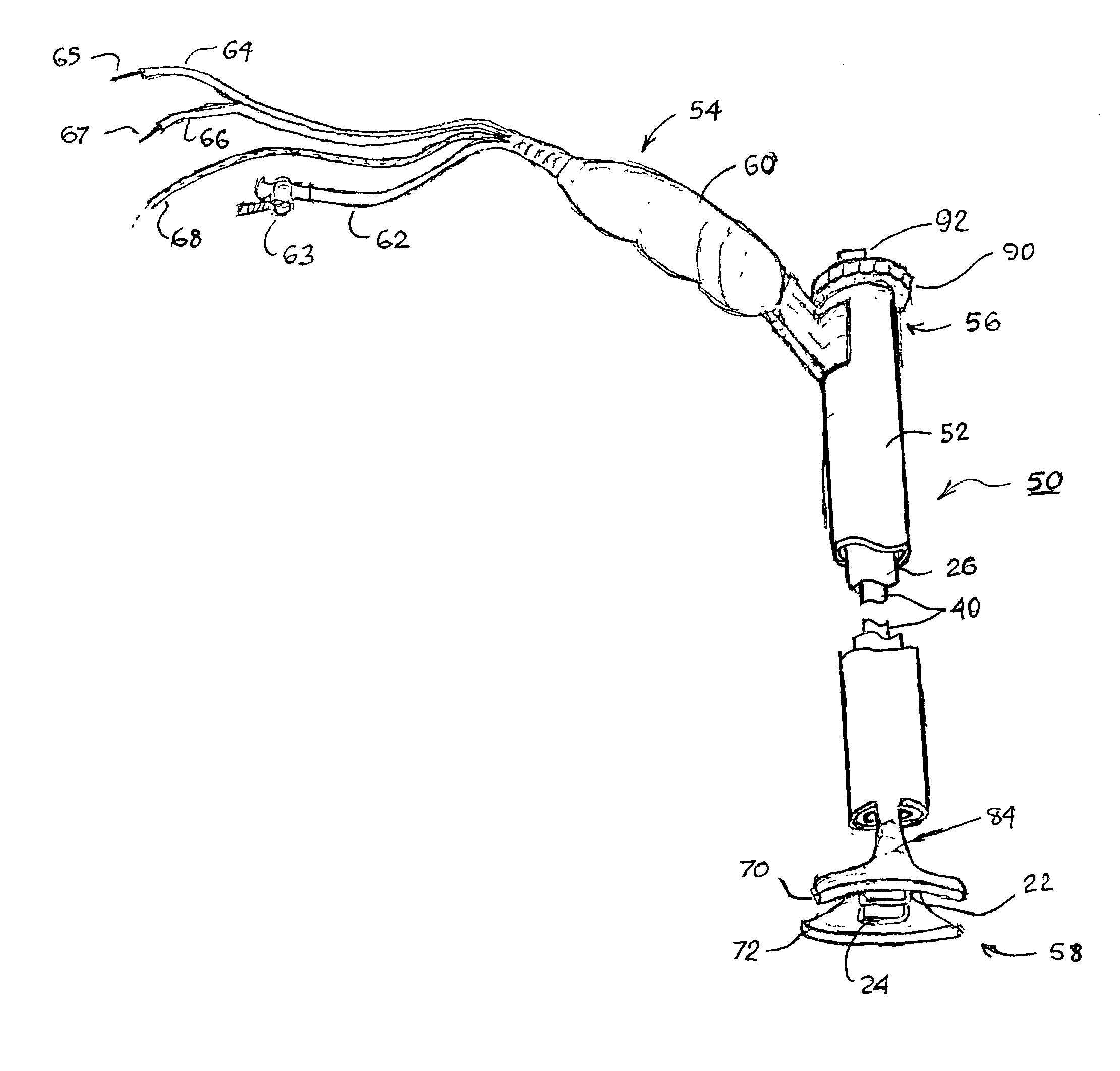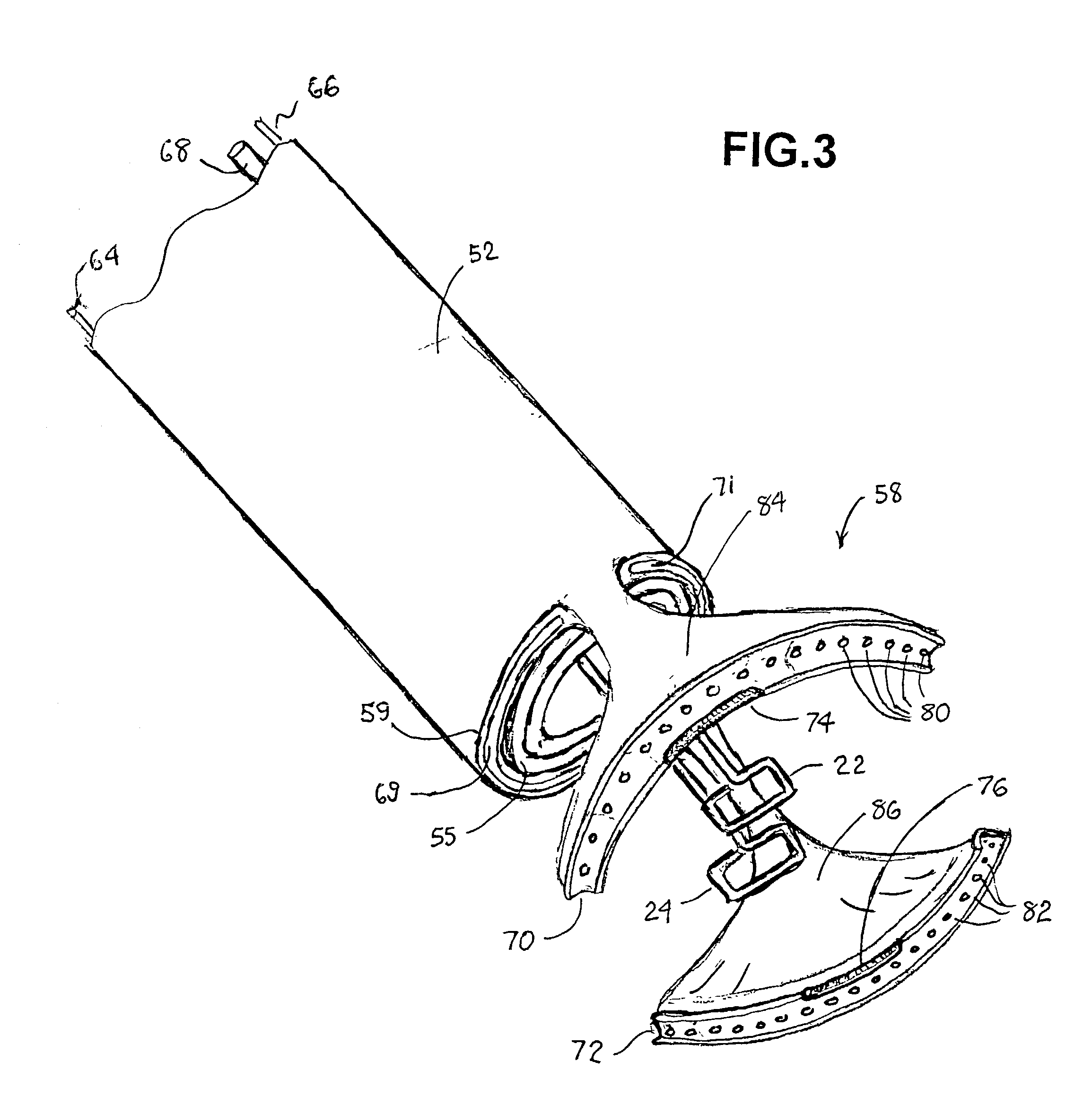Methods and apparatus for accessing and stabilizing an area of the heart
a technology of accessing and stabilizing an area of the heart, applied in the direction of internal electrodes, therapy, surgery, etc., can solve the problems of not providing access, unable to reliably maintain a vacuum seal against the pericardium when such treatment devices are advanced, and unable to provide access
- Summary
- Abstract
- Description
- Claims
- Application Information
AI Technical Summary
Benefits of technology
Problems solved by technology
Method used
Image
Examples
Embodiment Construction
[0038]In the following detailed description, references are made to illustrative embodiments for carrying out the invention. It is understood that other embodiments may be utilized without departing from the scope of the invention.
[0039]FIG. 1 is a plan view of an implantation tool 10 of the type disclosed in the above-referenced '526 patent, which is incorporated into a preferred embodiment of the epicardial lead installation tool of the present invention, gripping the electrode head 102 of an epicardial screw-in lead 100 to screw the helical electrode 104 through the epicardium accessed through a surgical incision into the myocardium 110. The implantation tool 10 comprises outer shaft tubing 26 having a lumen extending between the device proximal end (not shown) and the distal nose cap 20. An internal shaft or cable 40 extends through the lumen of the outer shaft tubing 26 between a pair of spaced apart tongs 22 and 24 and a proximal handle assembly (not shown) that enables select...
PUM
 Login to View More
Login to View More Abstract
Description
Claims
Application Information
 Login to View More
Login to View More - R&D
- Intellectual Property
- Life Sciences
- Materials
- Tech Scout
- Unparalleled Data Quality
- Higher Quality Content
- 60% Fewer Hallucinations
Browse by: Latest US Patents, China's latest patents, Technical Efficacy Thesaurus, Application Domain, Technology Topic, Popular Technical Reports.
© 2025 PatSnap. All rights reserved.Legal|Privacy policy|Modern Slavery Act Transparency Statement|Sitemap|About US| Contact US: help@patsnap.com



